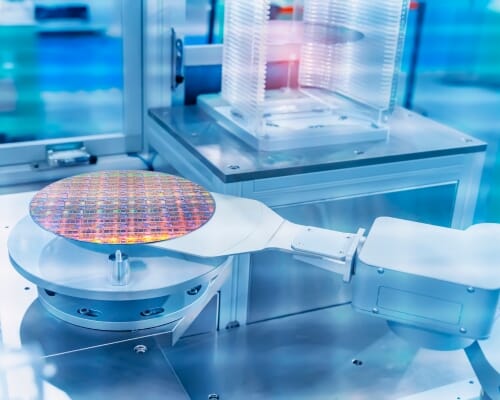
The Role of Compressed Air in Robotics and Automation
January 15, 2025
Four (and a Half) Critical Compressed Air Safety Tips
January 29, 2025My Compressor is Rapid Cycling. Now what?
Kaishan USA | January 22, 2025| Uncategorized
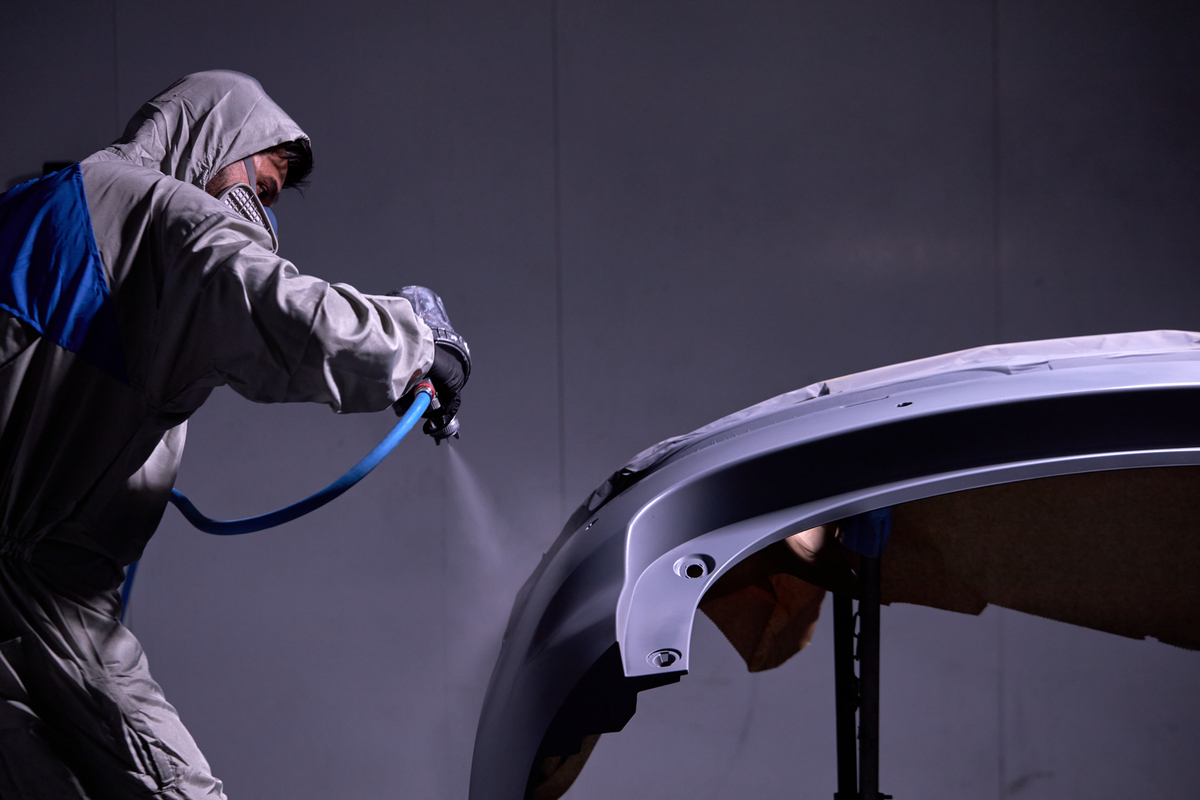
Rapid cycling can result in carryover of oil and water in oil-flooded compressors, a serious problem for applications such as automotive painting.
Not everyone who owns or operates an air compressor knows about rapid cycling. But if you do, you get that it’s something to avoid like the plague.
Understanding rapid cycling is critical to all your compressed air system and all the processes that rely on it. Preventing it even more so.
Let’s start with the basics.
What Is Rapid Cycling?
Rapid cycling happens when you’re constantly turning your compressor on and off, loading and unloading.

Here’s how that works: You need pressure, your compressor turns on. You reach the pressure threshold, it turns off. That’s load/no-load.
If your compressor loads before it’s finished cycling through to no-load, that’s rapid cycling. And it’s not a good thing.
Consequences of Rapid Cycling
All of that turning on and off can be devastating to your compressor, causing:
- Extra wear and tear on the motor, valves, bearings and other internal parts
- Overheating
- Carryover of moisture and oil
- Wasted energy
- Additional maintenance
- A shorter lifespan
Compressors have completely burned out after only six months of rapid cycling. It’s basic physics: Manufacturers will tell you that if a 200-HP motor starts and stops more than four times in an hour, it will burn out quickly.
For a fuller explanation of the cycles your compressor goes through, read our blog post, "How Often Should an Air Compressor Cycle?”
Why Does Rapid Cycling Happen?
A compressor gets locked into rapid cycling for any (or all) of the following reasons:
You Don’t Have Enough Storage
If you don't have enough storage, your compressor will have to start or load again to maintain your header pressure. And if it does that too often, it will begin rapid cycling, especially if there’s sudden demand—all your end users are calling for air at the same time.
Unfortunately, storage can be a tough sell for most end users. In addition to the space a large storage tank requires, there’s the added cost. That’s short-sighted—a storage tank is much less expensive than a new compressor.

This Kaishan 50-HP KRSD direct-drive rotary screw air compressors installed by Blue Mountain Air Compressor Services has a refrigerated air dryer and a dry-air receiver tank to ensure adequate storage.
We’ll have more on maintaining the proper amount of storage below.
Your Pressure Band Is Too Tight
The pressure band is the gap between your load and unload pressures. If you set the load pressure at 115 PSIG and the unload pressure at 125 PSIG, you have a pressure band of 10 PSIG.
If that band is too small, your compressor will load and unload too frequently, falling into the trap of rapid cycling. On the other hand, having too large a gap wastes a lot of energy. So, we try to hit a happy medium.
For more information on setting pressure accurately, read our blog post, “How Lowering the Pressure Band of Your Compressed Air System Can Save You Money.”
Your Compressor Is Oversized
It may seem counterintuitive, but having too much compressor is as bad as having too little. Here’s why: a rotary screw air compressor is designed to work with a 100% duty cycle. Run it less, and you’ll waste energy.
Even worse, your compressor will get locked into rapid cycling, turning on and off too frequently.
It’s easy to see how you can find yourself with an oversized compressor:
- Growth projections. You couldn’t resist the temptation to size your compressor with “room to grow.”
- Delayed expansion. You planned for an expansion that keeps getting delayed. Or even canceled.
- Equipment changes. You changed some of your tooling, reducing the number of machines that require compressed air.
- Reduced level of production. You don’t need the capacity you did when you bought your compressors. During the pandemic, many companies reduced their output to match a drop in demand. Some companies still have not recovered. And others have had drops in production for other reasons.
- Fudge factor. The designers of your end-use tool may have included a “fudge factor” into their specifications, calling for more pressure or flow than they really needed. If that happens across all the machines in your factory, you could be looking at serious oversizing.
- Upgrades. With all the productivity improvements in compressor technology, you can easily add too much capacity by simply swapping out horsepower for horsepower. Today’s 100-HP compressor has significantly more capacity than a model that’s even 10 years old.
- Utilization factor. Suppose you have ten end-use tools, each requiring 5 CFM of flow. You would then assume you would need 50 CFM of flow to service those tools, right? Not necessarily. You’ll want to factor in the utilization level: Are they running at 100% for an entire shift? Most likely, they’re not. And certainly not all running at the same time. Many businesses find their utilization rate is 50% or even less. So, 25 CFM of flow may be more than enough. For more on utilization factor, read our blog post, “CFM vs. PSI: What You Need To Know To Size an Air Compressor.”

If you’re not using all your air tools at once, you will want to make sure you calculate your utilization factor to ensure you’re not oversizing your air compressor and causing rapid cycling.
To get a better understanding of the intricacies of sizing, read our post, “Everything You Need To Know About Sizing Industrial Air Compressors for Manufacturing.” Or get into it more deeply by downloading our white paper, “Demystifying Air Compressor Sizing.”
So, what can you do about rapid cycling if you have it?
What Can I Do About Rapid Cycling?
If your compressor is rapid cycling, we can offer several alternatives to prevent the damaging starting and stopping. The most obvious one is modulation.
Modulation
Modulation involves adjusting the inlet valve in proportion to the system demand:
- Opening the valve allows the maximum amount of air into the compressor.
- Closing it reduces the amount of air entering the inlet.
That’s good for longevity but not helpful for efficiency. It has traditionally been viewed as a waste of money and energy, not unlike having your foot on the accelerator and the brake at the same time. But if it avoids the damage of rapid cycling, it may be worth it.
Kaishan is one of the few compressor manufacturers incorporating modulation into our units, though others do offer field retrofit kits.
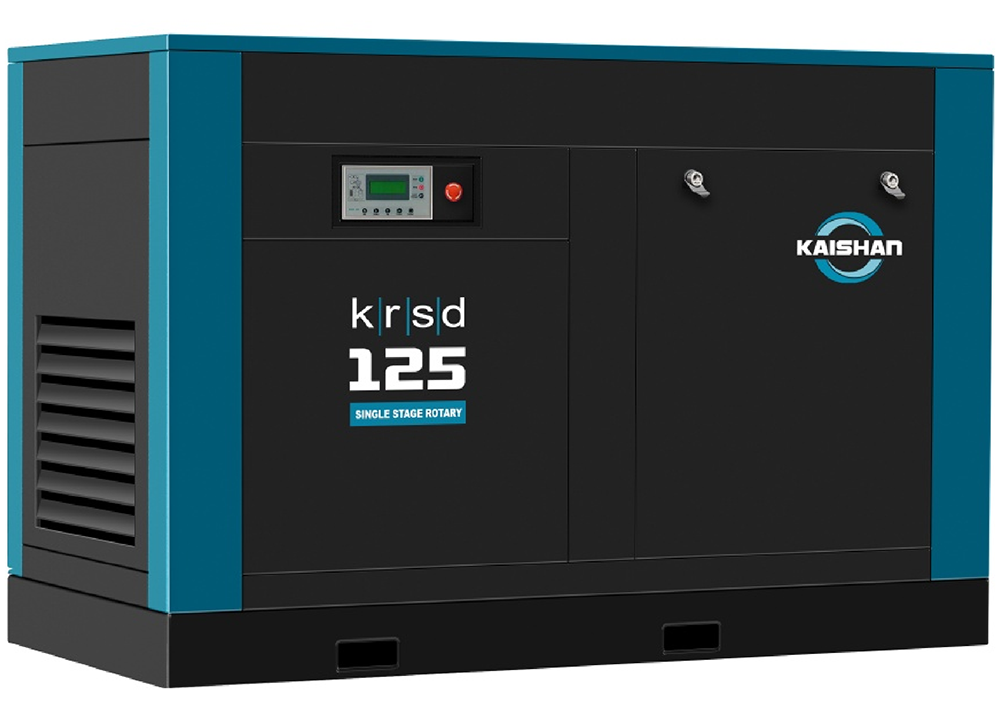
We incorporate modulation into some of our models, including our KRSD direct-drive and our KRSP rotary screw air compressors.
Another way to combat rapid cycling is the use of variable-speed drive compressors.
Variable-Speed Drive Compressors
A VSD air compressor adjusts its motor speed or RPM (and thus its CFM) to match the real-time demand for compressed air. When the demand drops, the inverter reduces the motor operation to a lower speed (and lower CFM), consuming proportionately less energy (and money).
That enables rotary screw compressors to operate more efficiently at part-load conditions and avoids the problems of oversizing and rapid cycling.
But they are not for everyone. We do not recommend using VSDs when your compressor runs at 100% load or below 50% of its total capacity most of the time.
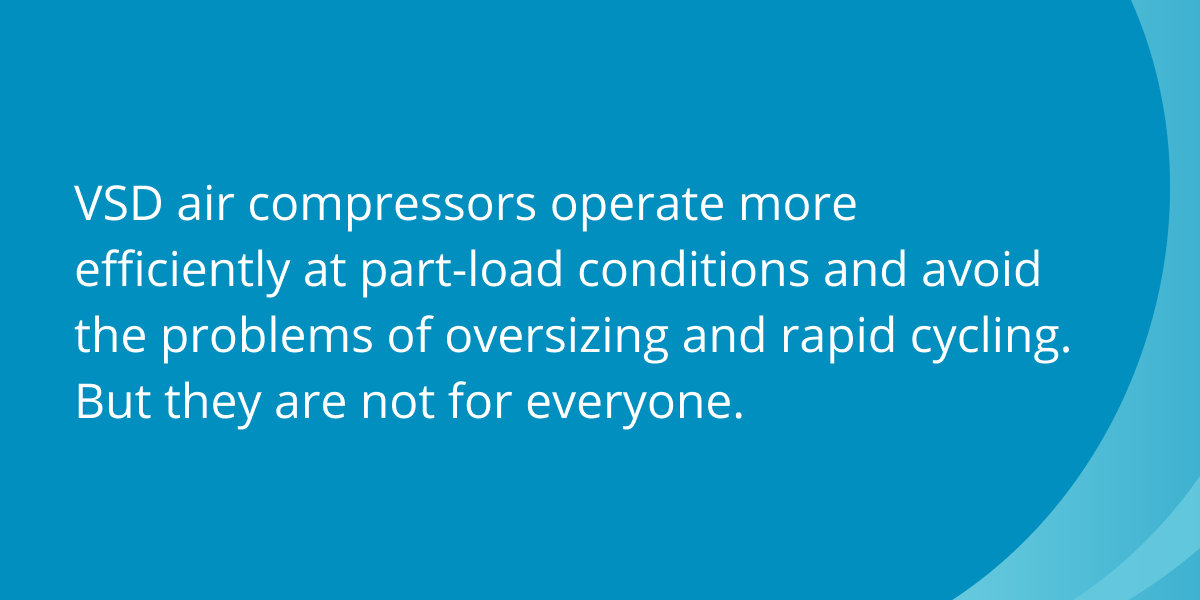
In addition, VSDs are not a good solution when there’s heat or a lot of dust or dirt in the air.
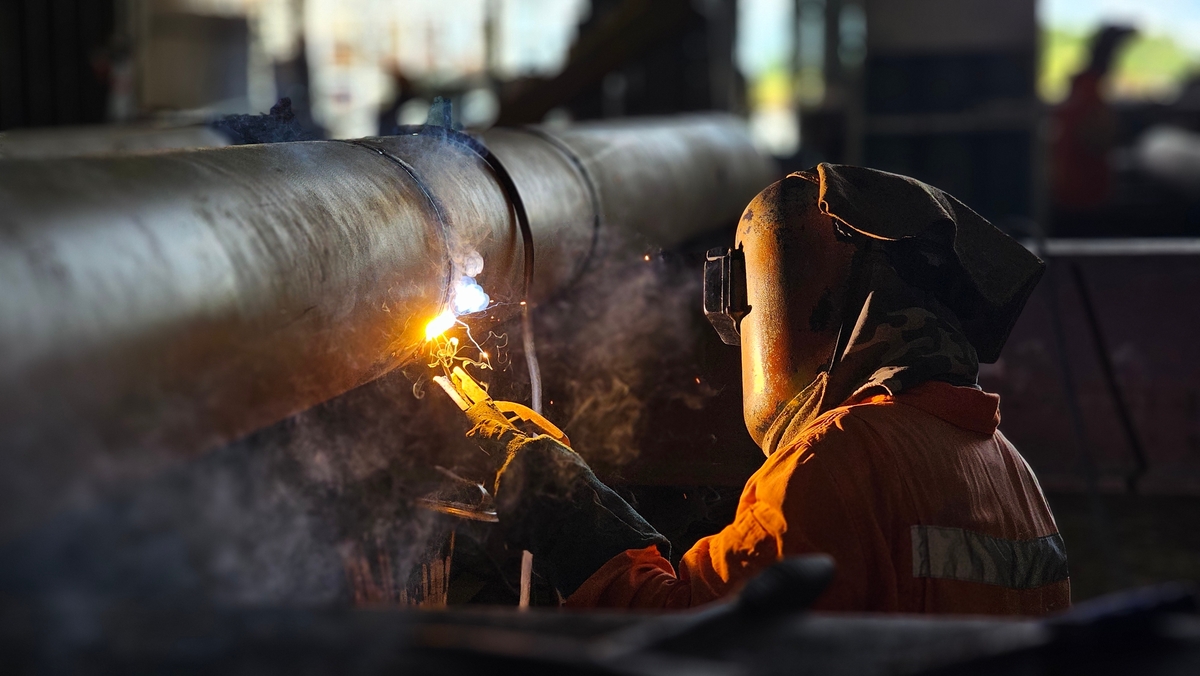
VSD air compressors are not a good choice in metalworking or welding facilities where the air is loaded with dust and dirt.
It’s also not easy to retrofit a VSD to an existing compressor. When they develop VSD compressors, manufacturers closely integrate compressor components to save energy. Bolting on any VSD to any compressor is not recommended. You can damage a drive, the motor or the compressor and consume more energy.
For a complete discussion on how and when to apply VSDs, read our blog post, “How Variable-Speed Drive (VSD) Rotary Screw Air Compressors Save You Money.”
You can also keep rapid cycling at bay with more advanced control systems.
Advanced Control Systems
Properly configured, more advanced control systems like network control and system master control can help you operate your compressed air supply in a relatively tight band, such as +/-2 PSIG and avoid rapid cycling.
However, these more sophisticated systems come at a higher cost. A lower-cost alternative is pressure-flow control.
Pressure-Flow Control
Pressure-flow control monitors the pressure at the control valve, releasing air from the air receiver tanks as needed to keep the system stable. So, while system master controls focus on the discharge pressure at the compressor, pressure-flow control monitors air pressure throughout the system. Users can maintain air pressure throughout their plant at the lowest optimum level, reducing discharge pressure on their compressors and cutting energy usage and cost.
Pressure-flow control thus buffers the compressors from the ups and downs of system demands, preventing rapid cycling.
To make flow control work, however, you need storage or compressed air receiver tanks.
Compressed Air Receiver Tanks
If you have adequate storage, your compressed air system can draw down the receiver tank, so your compressor doesn’t have to kick on again to meet the immediate need. Then, when the compressor loads, it meets those current needs and also refills the storage tank.
Most of the control techniques mentioned above require appropriately sized storage tanks. It’s a best practice to have both wet and dry storage to remove moisture and maintain stable header pressure for these fast events.
How much storage is enough? The Compressor Air and Gas Institute says you need eight to ten gallons of storage for each CFM of flow from the largest compressor.
For more information on storage and compressed air receiver tanks, read our blog post, “A Quick Guide To Accurately Size Air Compressor Tanks.”
Some users think they won’t need that level of storage if they have a VSD compressor. Unfortunately, that’s not true: You still need storage to create that all-important buffer at times of high demand. And remember, your air distribution system (air piping) is not real storage. You need differential pressure to create storage.
A Solution with Real ROI
Depending on your situation, the ultimate solution to rapid cycling could be the replacement of an ailing compressor, especially if it is oversized.
Fortunately, purchasing a smaller compressor, rightsized for your application, could produce significant energy savings and a substantial return on investment.
We’ve had situations where a company bought a smaller compressor and achieved a two-year payback on energy savings alone (See several new air compressor ROI success stories on our case studies page.) Not to mention the maintenance, downtime and aggravation of dealing with a rapid-cycling compressor.
Ultimately, the best way to stop rapid cycling is to prevent it before it happens.
Preventing Rapid Cycling in the Next Round
Maybe you grew more slowly than anticipated. Cancelled a planned expansion. Changed your mix of tools. Or sized your compressor with room to grow. Whatever the cause, you’ll benefit tremendously by working with a compressed air professional to analyze both the supply and demand sides of your compressed air system. And prevent rapid cycling before it starts.
You can get that kind of help by working with our nationwide network of independent distributors, who can come to your site and provide the analysis and consultation you need. These factory-trained air compression experts can also service your air compressor system without a problem.
Key Takeaways
- Rapid cycling happens when your compressor is constantly turning on and off, loading and unloading.
- Rapid cycling causes overheating, carryover of moisture and oil, energy waste and reduced compressor lifespan.
- The main causes of rapid cycling include inadequate storage, a pressure band that’s too tight and oversizing.
- Steps to avoid rapid cycling include modulation, VSD compressors, advanced control systems, pressure-flow control and additional storage.
- You may also find it cost-effective to replace a rapid-cycling compressor, especially if it is oversized.
- The best solution to rapid cycling is to prevent it by working with a compressed air professional to fully understand both the supply and demand sides of your system.
Let Us Help
Understanding rapid cycling is critical to getting excellent service from your compressed air system and all the processes that rely on that system. If you need help stopping rapid cycling, get in touch with the experts at Kaishan. Contact us today.
Listen to the Podcast Version
Understanding Rapid Cycling
Alright, let's not sugarcoat this—rapid cycling is a big deal when it comes to rotary screw compressors. We're talking about compressors switching on and off constantly, almost like... I dunno, like a light flickering when there's a bad connection. But this isn't just annoying—it's a nightmare for the equipment.Right. And it’s surprisingly common! I was at one of those compressed air expos, and I overheard a lot of maintenance managers saying they didn’t even realize their compressors were cycling too much until things started breaking down. Seems like it’s easy to miss—until it’s not.
Exactly. That on-off behavior? It leads to mechanical wear. Fast. Motors, valves, bearings—they all take a beating. And it's not just wear; you're also looking at wasted energy and more maintenance headaches.
So, what gets compressors locked into this vicious cycle? I mean, why does this even happen in the first place?
It boils down to three main things. First? Storage, or a lack of it. Not enough air storage in your system puts way too much pressure—no pun intended—on the compressor to keep up with demand.
And that makes sense. The air in the system gets used up, and your compressor has to work overtime to fill the gap, right?
Exactly. Without enough storage, compressors end up cycling way more than they’re designed to. Now, the second issue is tight pressure bands. That’s the gap between the pressure when your compressor kicks on versus when it shuts off. Make it too narrow, and your compressors are basically playing ping-pong all day, loading, unloading, loading again.
That sounds exhausting for the equipment. So, what’s the sweet spot for pressure bands? It can’t be too wide either, right?
Yeah, you don’t want it too wide because then you're just wasting energy keeping the system pressure higher than it needs to be. It’s about finding a balance, and that’s where a lot of systems fall short. Finally, let’s talk oversized compressors. This one’s tricky because buying bigger seems smart—extra capacity, room to grow, all that. But it backfires.
Ah, like having a sports car for a quick trip to the grocery store. Totally overkill.
Exactly. Compressors are built to run at 100% duty cycle—or close to it. When they’re oversized, they’re running way under capacity most of the time, and guess what that leads to? Rapid cycling.
It’s kinda ironic, isn’t it? People think they’re future-proofing by going bigger, but they’re just creating more problems. I mean, I’m betting tighter budgets and staff cuts during the pandemic didn’t help either—probably made it even easier to skip the right analysis.
Yep, exactly. People are just trying to get by, but these kinds of oversights can be costly in the long run—machines breaking down, efficiency losses—it all adds up.
The Efficiency Cost of Rapid Cycling
Now that we’ve unpacked why rapid cycling happens, let’s dig into what it actually does to compressors. We’re not just talking inconvenience here—this is about serious wear and tear. Motors, valves, bearings—they all take a beating. And the heat? Overheating becomes a big issue too.That overheating thing—it’s more than just damaging the equipment, isn’t it? I mean, doesn’t it also mess with the air system itself?
Exactly. You know, when compressors overheat, you’re looking at carryover of oil and moisture. That’s disastrous in systems that rely on clean air, like automotive painting or sensitive manufacturing. It’s not just inefficiency, it’s risking the quality of the final product.
Wait, carryover? That’s when oil or water ends up where it shouldn’t, right?
Yep, oil and water moving downstream. Imagine spending all that time and money maintaining your air tools or machines, just to have contaminants mess everything up. And the kicker? Rapid cycling wastes energy like nobody’s business. You’re burning through your power bill while shortening your compressor’s lifespan.
It’s wild how expensive inefficiency really is. I mean, there’s energy waste, sure, but what about repair costs? Maintenance has gotta skyrocket with all that wear and tear.
Oh, it does. Let me tell you about this manufacturing plant I worked with—they didn’t realize their compressor was locked in rapid cycling until the repair bills started piling up. Motors burning out, constant valve replacements, and—get this—they replaced the whole compressor after just eight months. Eight months!
Whoa, that’s insane! What went wrong?
It was a combination of things: no storage buffer, a pressure band that was too tight, and an oversized compressor. So their system was just sending the machine into rapid cycling over and over. By the time they called in a technician, the damage was already done. They spent nearly double on maintenance and replacement costs compared to what it would’ve cost to prevent the issue.
Man, that’s frustrating. And the thing is, I bet they didn’t even notice the problem until it was too late. It’s not like rapid cycling screams “fix me” when it starts.
Exactly. It’s one of those silent killers in industrial maintenance—drains your wallet without you even realizing it. And when you factor in the downtime to fix all this? You’re talking thousands lost in productivity.
Implementing Solutions to Combat Rapid Cycling
It’s crazy how these issues can sneak up on you, isn’t it? But we’ve got to figure out how to catch them early—and better yet, how to stop them altogether. So, what’s the game plan to fix rapid cycling?Well, first off, let's start with a fail-safe: storage. I’m talking about making sure you’ve got the proper air receiver tanks, enough to create a buffer for the system. Ideally, eight to ten gallons per CFM from the largest compressor. That’s the golden rule.
Eight to ten gallons—that’s not exactly small potatoes, right? I mean, I can see why some plants hesitate when storage takes up both space and budget. But skipping on it seems like a false economy.
Exactly. A storage tank’s cheaper than a new compressor and saves you a ton on maintenance and energy costs. Now, pair that with advanced control systems. Stuff like network controls or pressure-flow control can stabilize your system, keeping pressure consistent without running your compressors into the ground.
Okay, so you’re saying it’s not just about having the right hardware. It’s about running it smartly, too. What about smaller facilities, though? They might not have the budget for state-of-the-art controls or tons of storage. What can they do?
Great point. Smaller facilities can start modular—simple things like rechecking pressure band settings or calculating utilization rates. Honestly, just knowing your system’s actual air demand versus perceived demand can already resolve a lot of issues.
That makes sense. And what about sizing compressors right from the start? That seems like such a huge factor in avoiding problems like rapid cycling.
It is. Oversizing is just asking for trouble. Trend-wise, the industry is shifting toward downsizing compressors because of the energy savings and improved performance. It’s all about precision—not more horsepower just for the sake of it.
So true. And the energy savings alone can make a huge difference. You hear folks talking about ROI all the time, but this seems like a no-brainer investment.
Yep, and it’s about being proactive. You can hang on to an oversized unit and just keep paying for its inefficiencies—or, right-size it and watch the savings and performance improvements roll in. It’s your call.
Well, looks like the key takeaway here is clear: measure, adjust, and don’t skip the basics. But, uh, any final words of wisdom for folks out there dealing with their rapid cycling headaches?
Yeah—don’t wait. If your system’s cycling too much, talk to a professional. These problems don’t fix themselves. And remember, every tweak you make to optimize the system, no matter how small, adds up in the long run.
And on that note, that’s all for today. Thanks for listening, folks. It’s been great! We’ll catch you next time on The Big Dog Podcast.
Random stat or
customer quote
textXXtext
text

